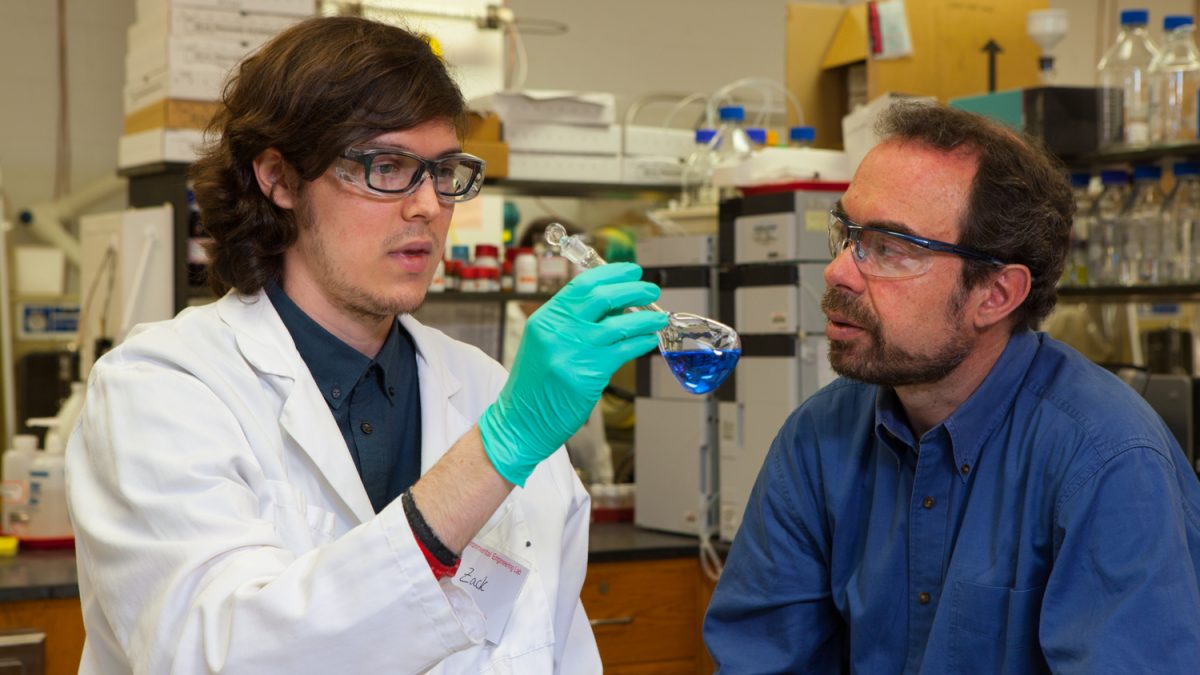For many years, Dr. Detlef Knappe and his research group have collected water samples along North Carolina’s rivers and then analyzed those samples in the laboratory. The work began as an effort to design better water treatment processes that would lead to safer and better tasting drinking water. Along the way Knappe developed a curiosity about fluorochemicals, or perfluorinated compounds. The substances he is concerned about have names like perfluorooctanoic acid (PFOA), perfluorosulfonic acid (PFOS), and hexafluoropropylene oxide dimer acid (HFPO-DA) which is also known as GenX. They fall into a category referred to as unregulated contaminants, so no one was actively monitoring for their presence. Most of us have not heard of these chemicals and can’t pronounce their names, yet these compounds are used in many everyday products including non-stick cookware, as well as our clothing and carpeting, where they confer stain and water resistance.

Things changed dramatically late in 2016 when Knappe’s research group, working closely with investigators at the U.S. Environmental Protection Agency’s National Exposure Research Laboratory in Research Triangle Park, issued a report describing high levels of a fluorochemical with the trade name GenX in the drinking water supply for the city of Wilmington, North Carolina and surrounding counties. The Cape Fear River basin is the source of drinking water for about 1.5 million North Carolina residents. Knappe’s research not only helped identify the source of the GenX contamination, but also highlighted that the chemical passes untouched through conventional and advanced drinking water treatment processes. GenX is a surfactant used to manufacture fluoropolymers such as Teflon, and it is also generated as a by-product in the manufacturing of other fluorochemicals. Fluorochemicals are implicated in increased rates of cancers and suppression of the immune system.
Public outcry was swift and by June 2017, the discharge of GenX and related fluorochemicals into the Cape Fear River was drastically reduced by the manufacturer. State officials also demanded that the manufacturer stop all discharges of fluorochemicals or run the risk of losing their wastewater discharge permit. Following an unreported release of a GenX precursor into the river in early October, the North Carolina DEQ moved to revoke the discharge permit of the fluorochemical manufacturer.
Since early June, the name GenX has practically become a household word in North Carolina, and Knappe has become a trusted expert for residents and journalists. He also communicates regularly with staff in the North Carolina Departments of Environmental Quality (DEQ) and Health and Human Services (DHHS) about GenX and other emerging contaminants. In addition to the time spent conducting the research at NCSU, Knappe has spoken at several public forums in front of hundreds of concerned citizens as well as to North Carolina lawmakers and members of the Environmental Management Commission. In September of 2017 Knappe was appointed to serve on the NC Science Advisory Board, a panel of 16 experts who advise DEQ and DHHS.

Knappe and his team, including post-doctoral research associate Nadine Kotlarz, PhD students Zachary Hopkins, Chuhui Zhang, and Amie McElroy, and BS student John Merrill, are continuing to investigate challenges posed by GenX and other unregulated contaminants in the Cape Fear River basin. For example, efforts are also focused on 1,4-dioxane, a manufacturing by-product and likely human carcinogen. Knappe’s team has worked together with residents in impacted communities to identify home filtration options that effectively remove emerging contaminants from tap water. His research group is also working closely with drinking water utilities and consulting firms to identify effective treatment options for emerging contaminants.
Knappe is also a co-investigator on a team of researchers who are studying GenX exposure and health effects through a grant funded by the National Institutes of Health. In a community-based study of 400 Wilmington area residents who are served by the public water utility, the research team is analyzing blood, urine, and drinking water samples to investigate GenX levels in the body as well as possible liver and thyroid function effects from exposure. All results will be shared with the community as a whole, and with individual participants.
“I am pleased that officials moved quickly on this issue once it came to light,” Knappe said. “The good news is that levels of GenX and related fluorochemicals have dropped substantially in the drinking water of more than 200,000 North Carolina residents. But it’s important to remember that many other unregulated contaminants are still being discharged into our drinking water sources. Sometimes these chemicals are referred to as emerging contaminants, but that is quite misleading since in cases like GenX and 1,4-dioxane, they’ve been discharged into our waterways for decades.”
